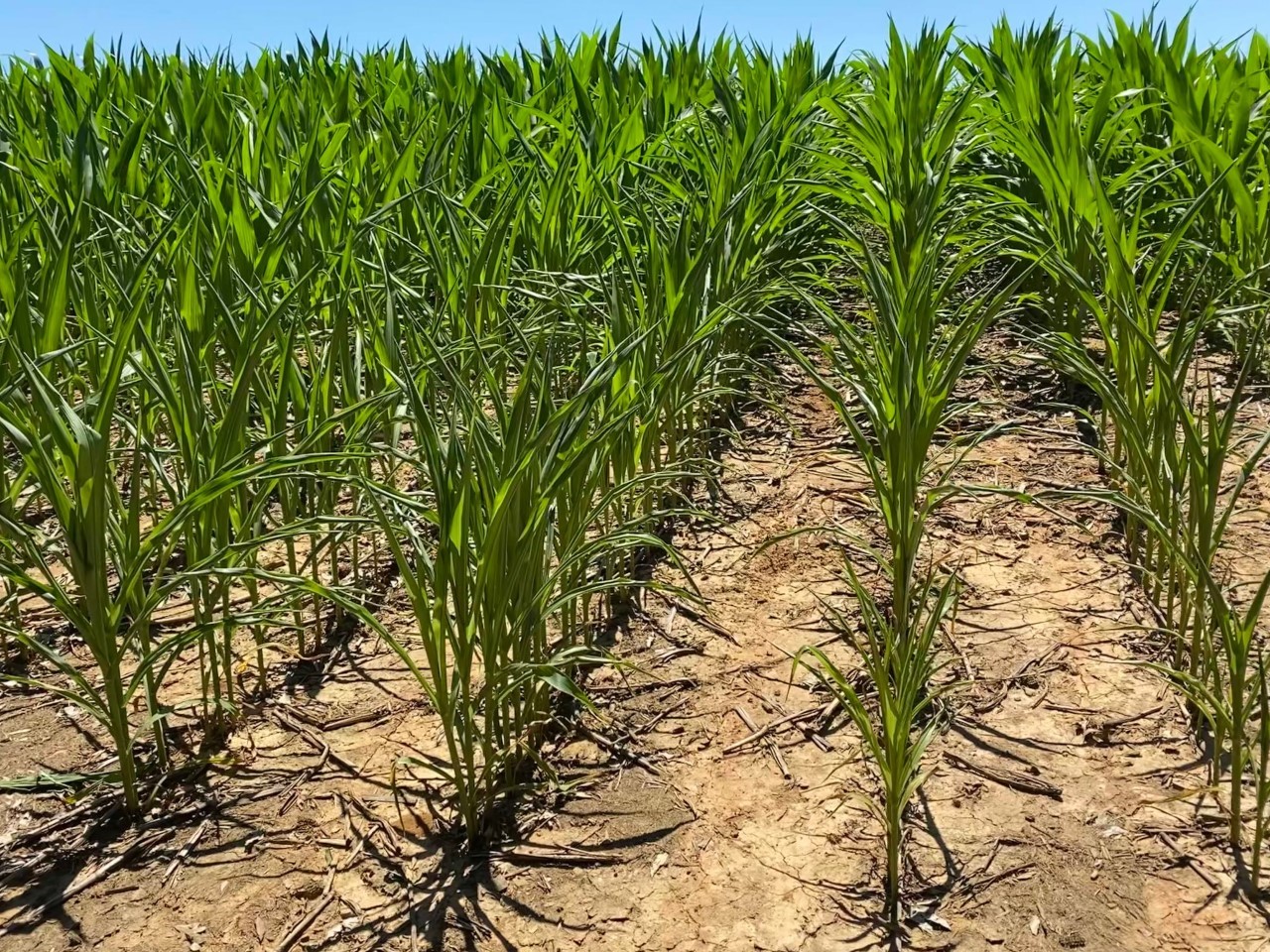Corn is not sensitive to water limitations in early vegetative stages, but it’s important to watch the growth stages and soil type when timing irrigation. After V8, corn undergoes rapid vegetative growth and ear size determination begins (Table 1). A corn plant’s irrigation requirement will drastically change with the onset of hot and dry conditions such as are being experienced this month (Figure 1).

Evapotranspiration (ET) describes the movement of water from the soil into plant roots, through plant stems and leaves, and back out into the atmosphere. The rate of ET and the sensitivity of corn plants to water-deficit stress will change depending on the weather condition and plants growth stage (Table 1).
To effectively use weather-based crop water use estimates, in order to determine when and how much to irrigate producers need to estimate how much soil water is available for plants uptake and how much is being used by the crop in a given day. Installing soil water sensors in the soil profile based on plant rooting zone and monitoring the soil water availability via sensors can help with making the right initiation of irrigation for our corn plants.
The sensor reading values will fluctuate day by day due to plant growth, soil type, and plant root depth utilizing water from varying depths. Irrigation systems take time to move over the entire field, so using soil water sensors can help with proper initiation of irrigation before the field reaches a critical water depletion.
Soil water sensors designed by Meter Inc.® and WatermarkTM are able to measure soil water potential and water holding capacity (i.e., soil water tension) based on cb (-kPa). The interpretation of range 65-70 cb (-kPa) while reading these sensors is stress range for most soil and crops including corn. Following you can see an example of smart-sensor based irrigation:
In this example the rooting zoon is only 12 inches (100% of the soil profile) and we have our sensors placed in 6 and 12”. Each sensor reading is multiplied by 50% and the sum total is an average soil water value of 45 cb (-45 kPa) (Table 2).
Considering, the range 65-70 cb (- kPa) is the water-deficit stress range for our silt loam soil and corn plants then, at 45 cb (-45 kPa) we can hold on and delay our initiation of irrigation until the actual value is 65 or 70 cb (- kPa). For more examples please see: Utilizing Moisture Sensors
Depending on our crops rooting zone, soil water sensors can be spaced out in the soil profile differently. Typical sensor depth can be 6 to 36 inches.
Resources:
- https://news.utcrops.com/2020/06/why-irrigation/
- https://news.utcrops.com/2017/06/irrigation-for-corn-and-soybeans/
- https://www.mississippi-crops.com/2022/05/14/when-should-we-start-irrigating-corn-to-enhance-yield-potential/
- https://www.mississippi-crops.com/2016/05/24/utilizing-moisture-sensors-to-increase-irrigation-efficiency/

